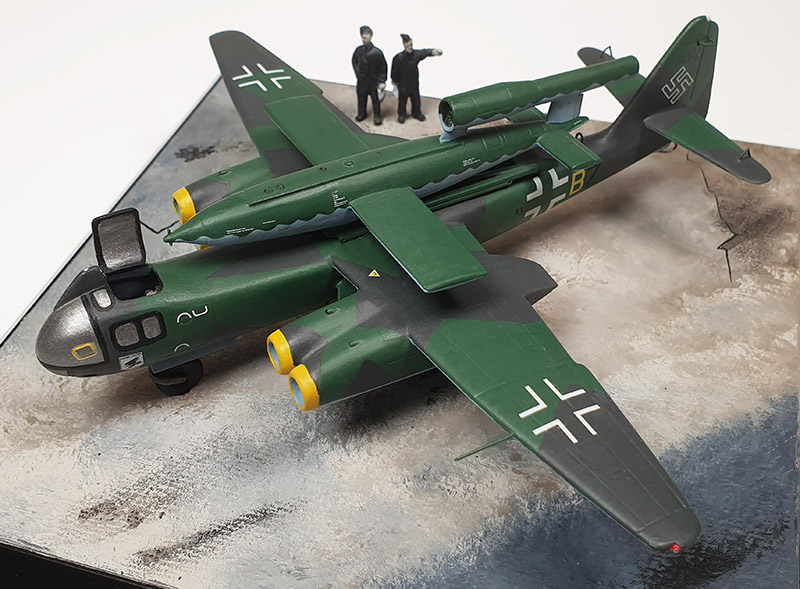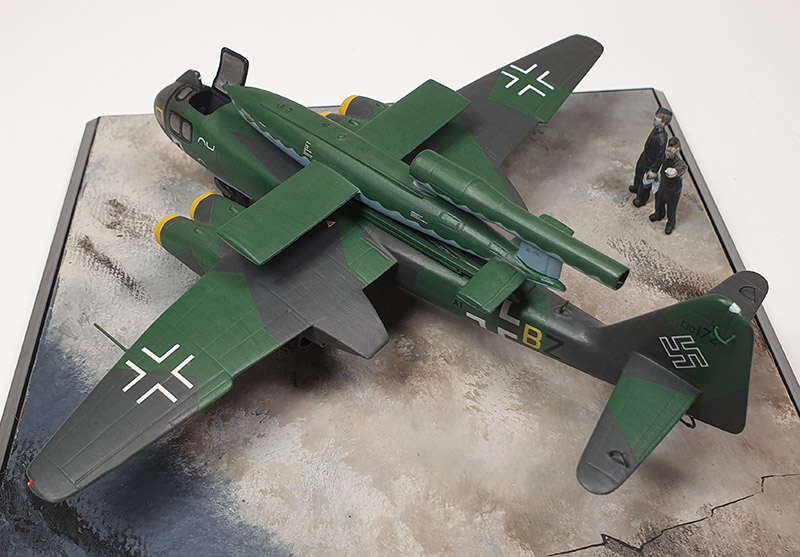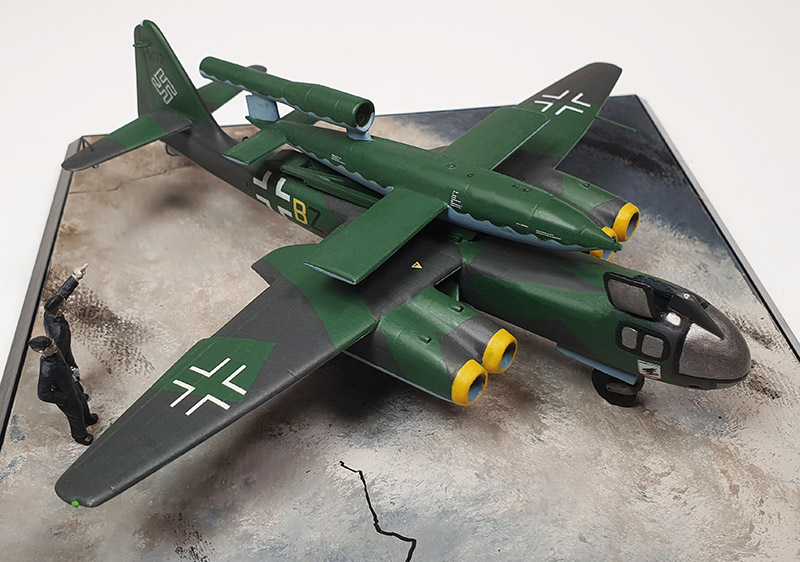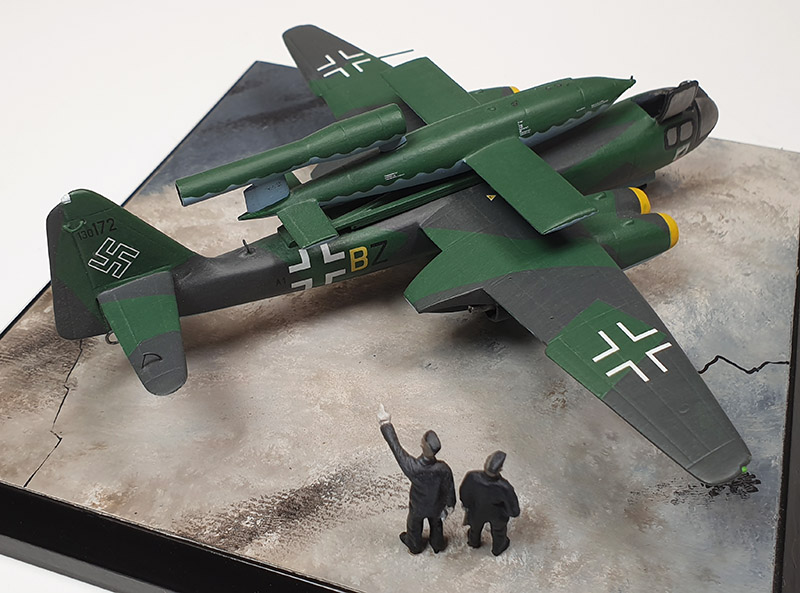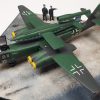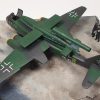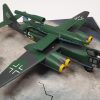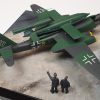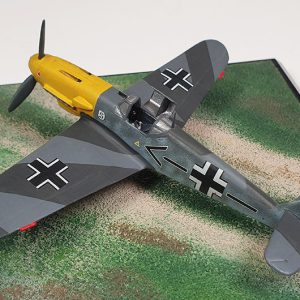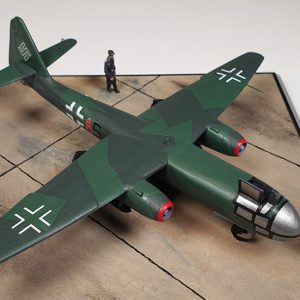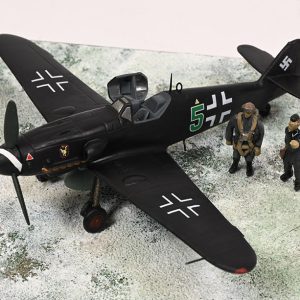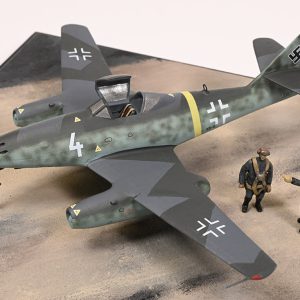Arado Ar 234C-3 “Huckepack”
Wk.Nr. 130172 A1+BZ 3./KG 53
The Arado Ar 234 was developed by the Arado Flugzeugwerke GmbH company at the request of the Reichsluftministerium in the autumn of 1940. The specification was for a medium-range reconnaissance aircraft to be powered by the new jet engines being tested by BMW and Junkers. This project resulted in the twin engined Ar 234B-2 which reached the Luftwaffe’s operation test units for the first time in late September 1944. To improve performance, experiments were conducted with four-engined arrangements and led to the development of a new production series, designated the Ar 234C. The V19 prototype for the C-series flew for the first time on 30 September 1944, and was essentially an adaptation of the twin-engined Ar 234B powered by four BMW 003A-1 turbojets housed in paired nacelles beneath each wing. In addition to the several prototypes, 14 pre-production and production variants of the four-engined Ar 234C were constructed but fewer received their powerplants and none reached operational units. The Ar 234C-3 multi-purpose variant was foreseen to incorporate modifications of the Ar234B such as a redesigned cabin, with raised cockpit roof to improve visibility, and increased armament. More powerful BMW 003C-1 engines were anticipated for the Ar 234C-3 but their non-availability led to retention of the BMW003-A1 turbojets in the five prototypes of this variant.
On 25 October 1944, Arado made four proposals regarding the towing or carrying of the Fiesler Fi 103 flying bomb (“V1” or “doodle-bug”) by the Ar 234C. At that time Heinkel He 111 bombers carrying V1 bombs were just entering service on night operations with Kampfgeschwader 3 and 53. The He 111 itself was extremely vulnerable to night fighter attack, as the V1 launch lit up the area around the aircraft for several seconds. The final design submitted by Arado involved mounting the V1 bomb on top of the Ar 234C-3 in a so-called “Huckepack” (“Piggyback”) configuration. For launching, it was planned to raise the missile above the parent aircraft by using a series of hydraulically-operated arms. However the fortunes of war did not permit sufficient time or resources for development and introduction of the Arado Ar 234C-3 and hence concept aircraft such as Wk.Nr. 130172 A1+BZ had no opportunity to prove their worth on operational sorties. Undoubtedly though, had the Luftwaffe been able to bring the Ar234C “Huckepack” into service and maintain its operation in sufficient strength, the Kampfgeschwader would have included in their order of battle, a very superior aerial platform for launching V1 bombing strikes.


